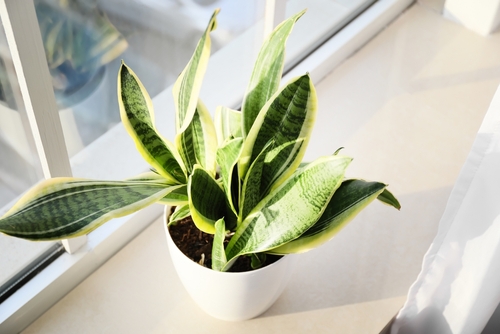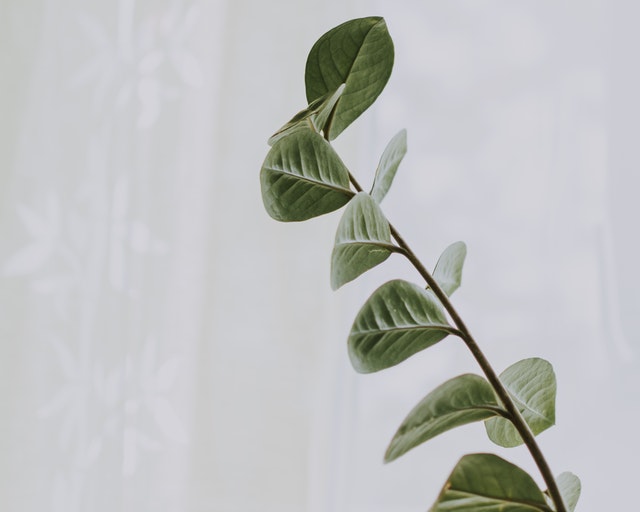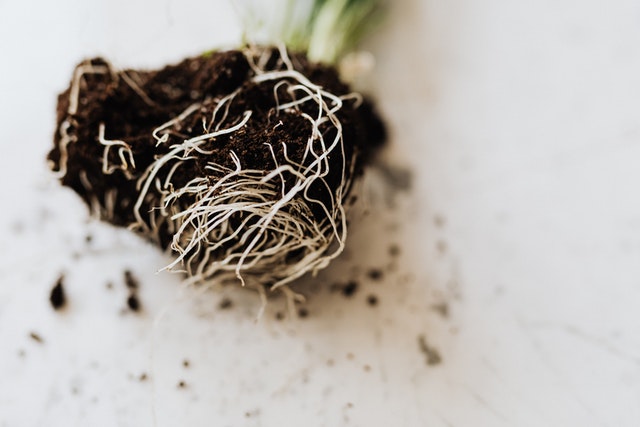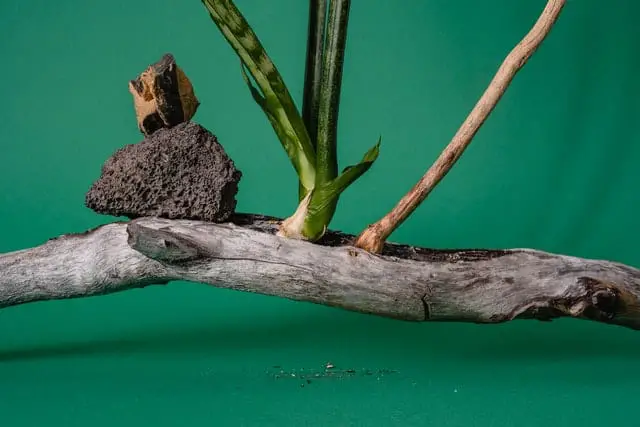Sansevieria Sayuri is a beautiful and low-maintenance snake plant variety that is popular among plant enthusiasts due to its unique leaf texture and air-purifying qualities, and it can thrive in a variety of lighting conditions and soil types.
Sansevieria Sayuri is a crowd favorite when it comes to ornamental and decorative plants. It’s hardy, low-maintenance, and versatile. What more can you ask for?
Aside from its lush foliages, this plant’s patterned leaves can easily elevate your indoor setting. If you have one, here’s everything you need to know about Sansevieria Sayuri.
What Is the Sansevieria Sayuri Plant?

Sansevieria Sayuri is typically sought after for its beautiful foliage. It goes by many names, including Sansevieria Lion’s paw or Sansevieria Warneckii. Sometimes, it’s even called the Mother-in-Law’s tongue because of its leaves’ shape and length.
The genus Sansevieria is a member of the Agavaceae family. This genus contains around 60 different species.
The Sansevieria Sayuri plant is native to Central Africa and some regions in South Asia. In the US, it typically thrives all year round in states with hardiness zones of 9 to 11. It can survive the toughest conditions as long as it gets plenty of water.
Sayuri can either be grown indoors or outdoors. If grown indoors, this plant can give your indoor setting a soothing and airy ambiance. As an outdoor plant, it provides lush foliage and diversity for your plants.
With its long and narrow leaves, Sayuri is a less known species among the Sansevieria family. Its light green to silvery gray leaves make it a very attractive decorative plant.
What’s special about this plant is that it promotes clean air. The leaves absorb toxins from the air, which prevents bacteria and fungi from accumulating in the surroundings.
Origin and Classification
Sayuri is classified as a tropical plant originally found in the African regions. It was discovered by a German military physician Carl Warnecke in 1867.
Although it may not look like it, this plant can also be classified as a flowering plant. However, its flowers only bloom under mild stress.
Features of Sansevieria Sayuri
Buying your first Sansevieria plant can be confusing, so knowing the distinctive features of this genus can help you in choosing the right plant.
The Sansevieria Sayuri, in particular, has plenty of features that separate it from the rest of the Sansevieria plants. Let’s tackle each of these features.
1. Height
Depending on the growing conditions, the Sayuri can reach around 2-3 feet outdoors. In some cases, it can even grow up to 4 feet tall!
As an indoor plant, it may not grow taller than 2 feet. The upward growth of this plant can make it look taller, though.
2. Flowers and Leaves
Although rare, Sayuri produces flowers when they’re in a stressful environment. Its flowers bud as vertical flower spikes in shades of light green and white.
These flowers are usually clustered on top of the spiked leaves. They’re also known to produce a sweet fragrance that can occasionally attract pests.
3. Foliage and Stem

This plant is a top choice for indoor foliage because of its tall and blade-like leaves. Its leaves also carry a distinctive striped pattern.
A Lion’s paw’s foliage has streaks of green, silver, and metallic gray. As a result, people also call this plant Sansevieria Metallica and Sansevieria Silver Siam.
4. Evergreen
Sansevieria Sayuri is an evergreen tropical plant that keeps its lush foliage throughout the year. It’s a perennial cultivar made to last the toughest conditions.
As a result, this plant doesn’t go dormant at any time of the year. So, you shouldn’t worry about their leaves wilting during off-season months.
Basic Care of Sansevieria Sayuri
Sansevieria Silver Siam may be a low-maintenance household plant, but it still requires a good amount of care. This is one of the reasons why new plant parents choose this as a starter plant.
Knowing the proper conditions that are necessary for your Sayuri plant to thrive will surely help you take good care of it.
1. Size & Growth
Mature Silver Sansevieria can grow up to 3 feet tall and spread about 6-12 inches. Indoor Sansevierias tend to grow shorter than outdoor Sansevierias.
Most Sansevieria cultivars, including Sayuri, are naturally slow-growing plants. They grow the fastest during their active phase. You can observe this during spring or summer.
2. Light Requirements
Sayuri can thrive in any light condition, making it the perfect houseplant. From full light to full shade, this plant can adjust to any lighting conditions.
Ideally, you should place your indoor Sayuri near the window during the spring and summer months. This gives them an adequate amount of light without being exposed too much. In chilly months, you can move your Sayuri to low-light areas.
3. Water Requirements
Sansevieria Silver Siam is a drought-tolerant plant, so it doesn’t need frequent watering. As a general rule, water your Sayuri every 10-14 days.
Checking the soil’s moisture can also be a guide in determining whether your plant needs watering. Once the soil reaches about 50 to 75% of its dryness, it’s ready for another watering session.
This plant also requires less water during spring and fall. Colder temperatures slow down the evaporation of water from the soil.
4. Soil Requirements
Usually, a Sayuri isn’t particular to its soil as long as it’s provided with excellent drainage. You can opt for a gritty soil mixture that’s typically made for cacti and succulents.
Gritty soil is a soilless mixture that allows water to drain almost immediately. This type of soil is ideal for Sansevierias because they’re prone to root rots.
If you live in dry regions, a half and half mixture of sand and perlite also works well. Make sure to incorporate organic materials into the mix to avoid fast drying of the soil.
5. Sunlight Requirements

To get the best out of your Sayuri, plant it in an area where there’s moderate sunlight. Exposing it to direct sunlight can be too harsh. As a result, its leaves can turn brown.
Since Sansevieria Sayuri isn’t fussy when it comes to lighting conditions, it can be left potted outside your house.
6. Temperature & Humidity
The Sayuri grows best in temperatures from 60-85 degrees Fahrenheit.
In temperatures colder than 40 degrees Fahrenheit, your plant’s leaves are prone to frost damage. It’s best to keep them in a comfortable range of temperatures.
This plant grows best in humidity levels between 40% and 50%. This level should not exceed 60%, though. Higher humidity levels can lead to oversaturation and rotting.
7. Drought & Disease Resistance
Since the Sansevieria Sayuri doesn’t need frequent watering, it’s resistant to drought. It can survive without water for about two weeks. Abundance of water is its biggest enemy, in fact.
This plant isn’t entirely resistant to diseases, though. Common plant problems like attacking pests, drying leaves, and rotting roots can also strike.
8. Toxicity
This snake plant can cause gastrointestinal problems like an upset stomach or diarrhea when ingested by humans and animals. For others, they may experience dizziness or hallucinations.
Touching the plant directly can also result in skin irritation, so remember to wash your hands immediately after handling any part of the plant.
9. Fertilizing
Fertilizing your snake plant isn’t necessary, but it can be helpful.
In choosing the right fertilizer, a general-purpose houseplant fertilizer works best. Remember to dilute the fertilizer to half its strength to avoid overfeeding.
Fertilizing your plants once a month is already more than enough. It’s also recommended to only feed them from spring to summer. Fertilizing them in the winter months can end in burned roots.
10. Potting & Repotting
For indoor snake plants, it’s recommended to pot them in terracotta pots. Terracotta pots have holes underneath that provide great drainage. Their material also allows them to absorb extra moisture from the water.
Even if it seems like the plant hasn’t outgrown its pot, it’s important to have the soil changed. This prevents compacted soil from accumulating. You should do this every year in the spring when it’s the most active.
11. Pruning Requirements

If you see any wilted or discolored leaves, this is a sign your plant needs pruning. Controlling their growth and size is another reason you’ll want to prune.
When pruning, remove the undesired leaves from the base. Cutting halfway through the leaves can make them regrow.
It’s also recommended to always use clean gardening shears when pruning. Just remember not to leave pruned foliages around the plant since they can reroot.
How to Propagate Sansevieria Sayuri
Division is the quickest and simplest way to propagate your Sansevieria Sayuri. It only requires your plant and a blade to carry out this method.
- Before propagating your Sansevieria, lightly water it two days before its propagation. The water will act as a lubricant to release the plant easier.
- Carefully remove your Sansevieria from the pot. You can do this by either inverting the pot or tapping it lightly against a hard surface.
- Once removed, shake the plant to remove excess soil. You’ll want to see the roots relatively free of soil to make way for the rosettes.
- Place the plant on a clean surface and get ready to cut. Using a sharp blade, trim each rosette from the base of the plant.
- Plant each rosette in its new pot about 2 inches deep. When it’s newly planted, you can spray the soil lightly to keep it moist.h
Common Problems Caring for Sansevieria Sayuri
Although Sansevieria Sayuri can handle most conditions, it still succumbs to common problems like pests and root rot.
● Low-Level Pests
Spider mites and mealybugs are two low-level pests common to snake plants.
Mealybugs are more dangerous to your Sansevieria Sayuri than spider mites, as they feed on the nutrients your plant needs, which can end your plant’s life.
You’ll know you have a pest infestation if your leaves accumulate silky webs or they start turning brown.
● Drooping or Yellow Leaves
If you see your Sansevieria’s leaves drooping or turning yellow, there must be something wrong with its growing conditions.
This problem may be due to under or overwatering and lack of nutrients. It can also mean that your plant hasn’t adjusted to recent environmental changes like temperature swings.
● Brown Leaf Tips
Your plant can experience brown leaf tips if it’s been exposed to harsh sunlight. Try to filter the light with curtains or move the snake plant to an area with indirect lighting.
Too much fertilizer can be another cause. Flush the soil with water to remove excess salts and minerals.
● Root Rot

Root rot is a common problem that can be fatal to your Sansevieria. Once the roots start to rot, the rot can spread to the stem and foliage.
To prevent this, it’s important to avoid overwatering your plant. Use highly porous pots and gritty soil mixture to create a good drainage system.
See a similar post: Alocasia Purple Sword
Outro
Sansevieria Sayuri is ideal for plant parents who prefer low-maintenance and hardy plants.
This plant can survive in low-light conditions, infrequent watering, average temperature, and average humidity. It even functions as a natural air purifier!
Now that you’ve learned everything about Sansevieria Sayuri, it’s time to get yourself one!
Buying Options
The Sansevieria Sayuri plant can be purchased on Amazon and Etsy. The price for the plant varies, though. To get the cheapest price, check both marketplaces.
Click on the links below to check the prices.
Frequently Asked Questions
How Do You Take Care of Sansevieria Sayuri?
The Sayuri Snake Plant is a low-maintenance plant that only requires a stable environment and routine watering. One thing you’ll want to avoid is overwatering your snake plant as it can cause a host of problems that are sometimes irreversible.
Watering this plant should only be done every 10-14 days. Their watering schedule can even be less frequent in the winter.
You can perform regular maintenance on your Silver Sansevieria to promote their growth. This could be through checking for pests, repotting, or pruning.
What Is the Rarest Sansevieria?
The rarest Sansevieria cultivar is the Sansevieria trifasciata, also known as ‘Moonshine.’ Moonshine is known for its tall and elegant leaves.
Moonshines grow to an average height of 11-12 inches. They may not be as tall as other cultivars, but they offer added texture and character to a room.
Similar to the Sayuri type, Moonshine’s leaves also have pale green leaves with gray streaks. What’s unique about this kind is the mottling details in their leaves.
Is Sansevieria Good Indoors?
The Sansevieria family is an ideal choice for indoor plants. Not only do they add character to a room, but they also help in improving the air quality.
Sansevieria is one of the few plants that remove carbon dioxide and produce oxygen at night. It can also eliminate other chemicals from the air like formaldehyde, xylene, trichloroethylene, benzene, and toluene.
If you need help in regulating airflow in your room, adding a Sansevieria can definitely help.

Hey, I’m Lisa and I’ve been an avid gardener for over 30 years. I love writing, talking and living in the garden! Feel free to connect with me on my socials below

